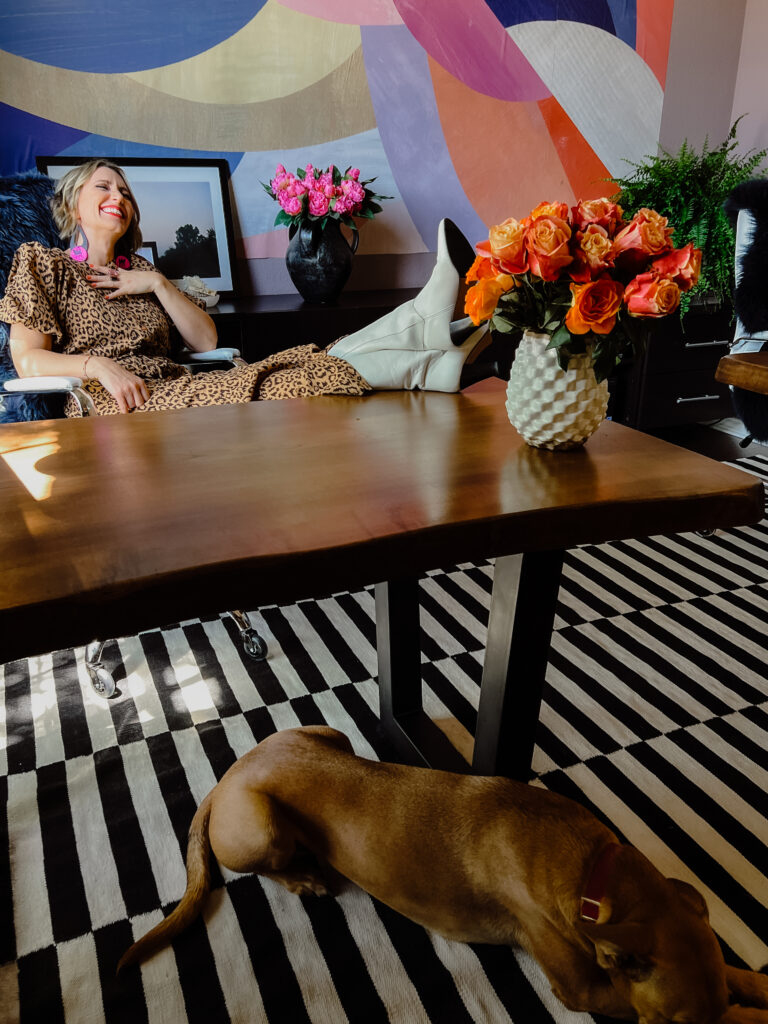Q & A: do people tend to choose design over Feng Shui?
years ago, i was a guest on a podcast with a designer and she asked me: “do people tend to choose design over Feng Shui?”
i’ll be honest. when shui and design meet up, shui is typically the less glamorous of the two. it requires the kind of change people don’t typically OOOH and AAAH over. there is no guarantee you’ll immediately have something to show for your investment. and if it’s part of a renovation conversation, it is often sidelined to make the design process more convenient.
add in that there are client objectives, and then there are shui issues – and my role is to tackle both. sometimes, those align. truthfully, though, the shui splinters aren’t usually problematic enough to the client – not in an obvious way (yet). part of a consult is to help you see your home as the soil. it is where you grow all the good things in your life. a home also sometimes “supports” a challenge you want removed from your story.
however, as the design process evolves, priorities will sometimes shift away from the shui and instead become “something we’ll consider” after the design is complete.
and i get it.
the satisfaction of a space “done” is highly intoxicating. however, sidestep Feng Shui, and the energetic chaos identified remains. and if you don’t understand what is causing the turbulence, you could inadvertently enhance those features with the new design.
so, let’s talk 3 scenarios – ones i see all the time – where shui should come first.
TIP ONE: maximizing space instead of being in command.
time and time again, i will work with a client and emphasize the importance of their office and desk being arranged according to command. why? with command, we achieve two things:
(1) when we sit / sleep with our back to the door (or with a compromised view of the door), our subconscious hovers on high alert – watching for any potential surprises or threats. we’re wired this way, by the way – it isn’t a conscious effort.
the point of Feng Shui is ultimately to shore up as much positive chi possible so you live a long, happy life – and a drip, drip, drip “on guard watch” every day is not shoring up chi; it’s leaking it. “command” nourishes the nervous system; out of command compromises it.

(2) open space in front of you means you have plenty of room to “gather, seize and take advantage” of auspicious chi heading your way as well as the ability to quickly respond to any challenges approaching.
and yet…
the design crew comes in and reconfigures these room layouts to “maximize” space – and within months, my clients are calling me and complaining about so many things going wrong.
bottom line: command – it matters.
***
TIP TWO: favoring an exclusively monochromatic palette.
monochromatic is design gold – it looks beautiful; it gives off strong serenity vibes; and it keeps things simple. and still, i am going to say it…
color is a BIG deal! while it doesn’t have to be maximalist or evangelical, it needs to be present in your surroundings somehow. why?
(1) color is an actual biological need because we’ve been wired to sense abundance in its presence. (i highly recommend the book JOYFUL if you want to learn why!) in its absence, we (without consciously realizing it) slip into fear. and over time, there’s that drip, drip, drip effect again of our chi leaking away instead of being contained and revitalized.
(2) colors instruct how we feel and influence our moods. for instance, lighter colors energize us; darker colors quiet us down. and the nature of each color can be worked with deliberately, too. feel like ‘branching out’? a spring green can channel that energetic boost for you well!
favor monochromatic rooms without color, and we are left without their vibrational fluency – literally – which can leave us feeling like nothing is ever changing. and without its liveliness in our surroundings, it falls on us to channel the energy necessary to grow, produce, thrive.
bottom line: “color pulls joy to the surface.”
***
TIP THREE: letting the builder / architect / designer dictate the purpose of a room.
most often, this is a dining room or a guest room – and there it sits. no matter how well the space is designed, though, if your chi isn’t in the mix, its chi is flatlining. and that is impacting the energetic potential of your surroundings. being in our space is more important than having a beautifully curated one that sits unused. when we don’t utilize a room in our home, two things happen:
(1) it definitely disrupts all the good shui we’ve implemented anywhere else.
(2) we miss out on that space’s unique energy offerings in our home.
i tell the story often of a client in Japan who had a guest room. he was wanting to trigger new possibilities in his career but with the limited space of his home, he couldn’t see how to do it. i asked him how often his guest room was used during the year for out-of-town company, and his response is still the highest answer i’ve ever heard: “probably 100 nights.”
still, the quick math left him with a room that was “purposeless” for 265 days every year. 2-6-5!
we discussed finding a fold-out bed alternative, and turning the guest room into his office.
within days of this small renovation, opportunities were cropping up everywhere. so much so, in fact, that we left me this note:
“i have to say that in every capacity, Amanda is amazing! while living here in Japan, i saw her consultations for Feng Shui and i was very curious about getting some advice for my apartment. i was a little skeptical because a lot of the advice she has is for big American homes, and i live in a small space. with her guidance, though, i was able to make my space into a home! i can recommend Amanda to someone living in any kind of space, in any country around the world. please let Amanda help you as much as she has helped me.”
bottom line: a room designed out of obligation is oftentimes a room rarely used – find a reason to use yours! xo




